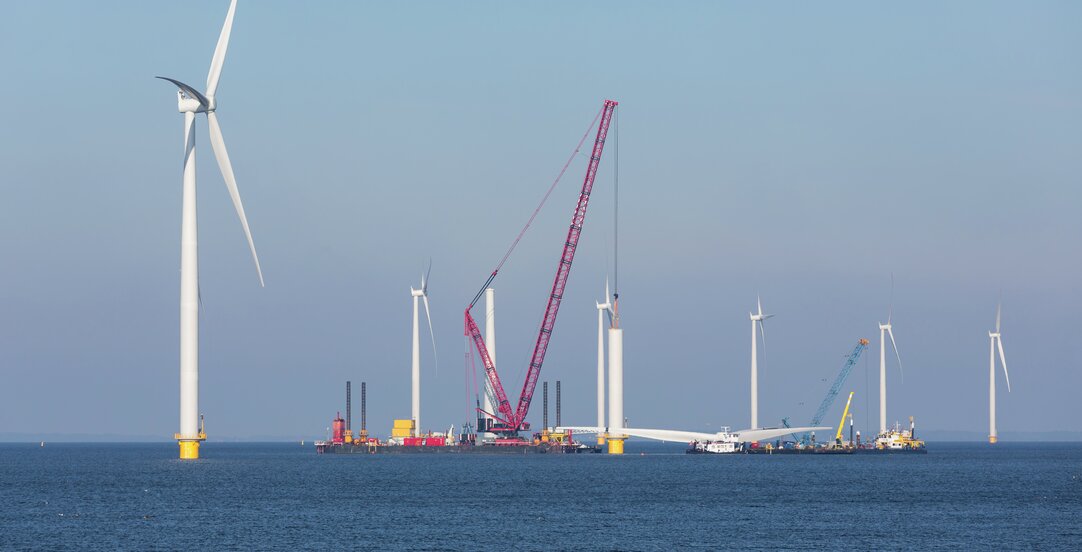Charterparties for wind turbine installation vessels

An important part of every offshore wind project is the installation of wind turbines. Installation of modern bottom-fixed offshore wind parks require specialised turbine installation vessels (WTIVs) to perform impressive lifts in challenging conditions. Currently, there is limited number of vessels available for these projects, in particular as wind parks are developed further offshore and with larger turbines. The charters for WTIVs are often fixed a couple of years prior to the project execution and accordingly, negotiation of the charterparties for these vessels is critical for a project’s success.
Reading time 5 minutes
Whilst BIMCO forms exist for example service operation vessels which can be fixed on ASVTIME and crew transfer services which can be fixed on WINDTIME, BIMCO has yet to develop standard charterparties for installation services. The industry players therefore often rely on heavily amended SUPPLYTIME charterparties or inhouse standards. While the SUPPLYTIME gives a good starting point for offshore services, several modifications are necessary to make the charterparty fit for installation services.
Scope of services
Although a charterparty for WTIVs will require several special contractual features, the WTIVs are typically fundamentally chartered under time charter structures. As with any time charterparty, the scope of services needs to be defined, and in the case of WTIVs, shipowners will essentially be required to provide a specific turbine installation vessel with warranted individual capabilities available for the charterer’s instruction.
Because offshore wind turbines vary from project to project, it is often also necessary to include provisions for modifications to the WTIV such as installation of grillage. Shipowners seldom take on turn-key obligations to install turbines, and even if the offshore wind industry has matured, we do not expect shipowners to take on significant installation risk.
Charter period
The charter period also need careful consideration. Due to the need for long time planning and the pressed supply of WTIVs in the market, there is as mentioned above often a significant period between signing and delivery. Parties therefore need to balance charterer’s need for flexibility with the shipowners need to have the vessel on hire and to build a backlog for several projects. A compromising solution is typically to give the charterer’s a wide delivery window, which is successively narrowed by charterer’s notices at agreed intervals until delivery.
Because the installation of the wind turbines is often on the critical line, we also see that shipowners are liable for liquidated damages for delayed delivery, even if certain charterparties only include cancellation without liability or cancellation without prejudice to other rights in the event of delay.
The charterer may also need flexibility after delivery, given the uncertainty of the length of the project. Therefore, charterparties often include options for extensions, such as (i) extension for a set time period, (ii) extension to complete an ongoing turbine installation, and (iii) extensions for downtime periods.
Charter hire
In order to address specific risks that arise in offshore wind installation projects, the charters often operate with a differentiated rate structure. In such rate structures, the risk for the vessel being prevented from working is allocated either to the charterer or the shipowner, depending on the cause of the delay. For the shipowner it is important to specify, as the clear base case, that the standard full operating rate applies as long as no other special rates are applicable.
Most charterparties include standby rates which apply when the charterer instructs the vessel to wait, for example to standby in port while waiting for the next turbine delivery. This rate is usually not much lower than the standard rate (typically only reflecting the reduced OPEX of the shipowner during standby). Specific rates typically also apply when force majeure situations prevent the vessel from working. Here we see solutions where the charterer takes the full risk or where the parties share the risk by reducing the rate, for example by half, while force majeure persists.
Every charterparty also include an offhire / zero rate and considerable time is often used to negotiate this rate. For the shipowner, being on hire is critical to cover interest payments on capital expenditures for expensive WTIVs, while for the charterer every day the installation campaign is delayed may lead to lost earnings.
Offshore wind parks are constructed in areas with sufficient wind to support an effective energy generation, and there is therefore always a risk that challenging weather conditions will prevent installations. The weather risk is often divided by the parties such that the shipowner takes the risk for being prevented from operating in weather conditions within set WTIVs warranted capabilities, while the charterer takes the risk for weather conditions above such WTIVs warranted capabilities.
WTIVs are often based on jack-up technology, and the seabed and subsoil conditions therefore becomes another key area to consider in relation to performance of services. While considerable time is spent analysing the ground conditions of the wind park, there will never be full visibility on the seabed and subsoil conditions due to the enormous area covered by modern offshore wind parks. In practice we therefore typically see that the shipowner only takes the risk for challenges in seabed and subsoil conditions which it ought to have discovered based on the information provided by the charterer, while the charterer takes the risk for other challenging conditions.
Although shipowners in our experience will not take the full installation risk as such, some charters contain bonus / malus regimes linked to the number of turbines installed within a given timeframe.
Liabilities
Lastly, during the course of installation, turbines, the vessels and other property or personnel may suffer damage. For offshore oil and gas services the knock-for-knock liability model has been well established as the industry standard for decades – providing that each party covers and takes out insurance for the risk of damage to its own personnel and property irrespective of fault and cause. The knock-for-knock model is considered an economically efficient way of distributing risk, and is fortunately also gaining ground as the standard in the offshore wind industry. However, in practice we see some deviation from this principle – typically that the shipowner is liable up to the amount of the deductible under the charterers' insurance where the loss is caused by negligence of the shipowner. Parties are well advised to confirm deviations from the knock-for-knock model with its insurers.
Conclusion
As the offshore wind industry develops further we expect to continue to see heavily amended SUPPLYTIME-forms or in-house standards as the starting point for charterparties for installation of offshore wind turbines. With BIMCO having taken a proactive approach by the developed WINDTIME and ASVTIME, reinforced by the momentum of the offshore wind industry, we also hope to see BIMCO developing a standard charterparty fit for installation.

